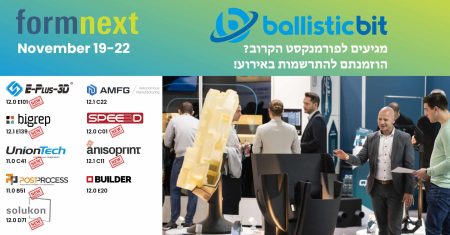Somfy is a global manufacturer of automated controls for homes and buildings. The company provides motorized shutters and solar protection, blinds, access control systems, security products, and smart home solutions. Driven by a natural push for innovation, Somfy recently adopted additive manufacturing as part of their prototyping process.
The company’s in-house prototyping department recently installed Figure 4® Modular photopolymer printers from 3D Systems—machines known for enabling same-day prototyping. So far, Somfy has already achieved greater design flexibility, allowing for multiple design iterations during product development at much higher speed.


DLP Parts – Optimized Workflow Requires More Than Just Printers
Of course, additive manufacturing is about more than just design software and 3D printers. Once the lab began working with advanced 3D printers, they realized that most conventional resin removal solutions couldn’t keep pace with their desired production speed and streamlined workflow.
As a company that places great importance on sustainability, health, and safety, Somfy never considered using isopropyl alcohol (IPA) for resin removal. IPA is known for its environmentally harmful properties, including high vapor pressure, high flammability risk, and short shelf life—all of which contribute to an unpleasant and unsafe working environment.
To maintain a smooth workflow and avoid the risks associated with IPA, Somfy turned to PostProcess Technologies, pioneers in automated resin removal solutions. After evaluating Somfy’s unique needs, PostProcess provided the DEMI 430, an automated finishing solution that uses proprietary cleaning agents and patented Submersed Vortex Cavitation (SVC) technology to consistently remove resin and support structures.
Thanks to PostProcess’s system efficiency, Somfy significantly increased their prototyping output. The lab now processes multiple batches of parts each day with the DEMI 430, maximizing printer utilization and achieving optimal productivity.
Results: Scalable, Safe, and Sustainable Growth
With the full PostProcess solution, Somfy is planning to add more 3D printers to its workflow, knowing that post-processing won’t become a bottleneck. By choosing PostProcess, Somfy brought high throughput, impressive consistency, and top-tier safety standards into their lab.
Moreover, Somfy proactively implemented a sustainable finishing process and achieved significant cost savings—thanks to the PostProcess cleaning solution’s lifespan, which lasts up to 6 times longer than IPA.
This extended shelf life reduces the need for frequent cleaning agent replacement—a costly and disruptive process that often results in machine downtime and increased safety risks.
Philippe Bendel, Head of Somfy’s Prototyping Lab, shares the impact of the DEMI 430:
“The DEMI 430 has quite literally been a breath of fresh air here in the Add Lab. It’s assuring knowing that this solution allows us the opportunity to grow and scale while maintaining the safest and most sustainable environment possible for our employees. We’ve already been impressed with the level of personalized support we’ve received from the PostProcess team, and look forward to continuing to experiment with new resins without having to worry that the post-printing process may slow us down.”



